Seven trade on turn one! Such is the power of this week’s format, Frontier Expedition. But that power is only afforded to player two, so player one needs to plan very carefully this week. We’re going back to the Big Money Format, not quite as big as Commitment to the Cause was in week four, but the bombs appear much faster than normal. How do you prepare? What are the pitfalls? And how does your intrepid reporter find new and interesting ways to fail to win an arena run this week? Read on to find out.
Format Rules and Technical Data
The scenario rule for Frontier Expedition ensures that the scrapping can begin whenever you want, and that dramatic openings are possible for player one and likely for player two.
Each player starts the game with two Explorers in the place of two Scouts in their starting deck.
The sets are Star Realms Core Set, Crisis: Bases & Battleships, Crisis: Fleets & Fortresses, and United Heroes. We rarely see United Heroes with the Core Set in the Arena. That set, along with the two Crisis sets included, makes the average cost of cards in the trade row about a half-point more expensive than normal. This doesn’t sound like much, but over the course of the game it really adds up. Thankfully, we have two Explorers in the starting deck to help with this.
In my three runs this week, most games ended between turns 17 and 18 — meaning eight or nine turns per player. A couple of them went very long, past turn 25. Since most of the expensive cards in this format are offense-oriented, it makes sense that getting to them faster would lead to faster games.
To Scrap, or Not To Scrap?
Because two of your starting-deck cards self-scrap, it can be tempting to jump into Machine Cult as soon as you can. It is very possible to win most games of Star Realms by being the first player to scrap all 10 starting deck cards, and you can still do that in this arena; I won both times I managed to do that this week. However, scrapping as a general strategy is not as strong as normal. Games are faster than normal, so you will have fewer opportunities to use them. And, because both players begin with some scrapping, the incremental value of additional scrapping is decreased.
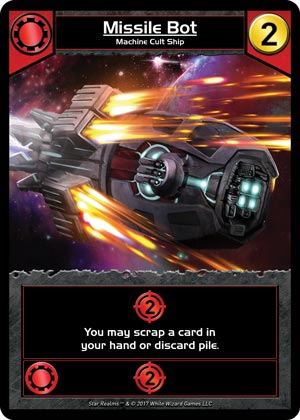
In other words, if I purchase Missile Bot on the first shuffle, I am likely to play it two more times throughout the game. I may play it a third time, but the game will likely end before my deck is shuffled again so that third scrap doesn’t count. Those two scraps that did count are fine, of course. Combine them with the two Explorers I would have scrapped by game’s end and that’s four scraps! Really good, but still only twice as good as my opponent, even if they did not purchase a single scrapping card.
Yes, scrapping is good, but it isn’t as dominant of a strategy as in normal play with the Core Set.
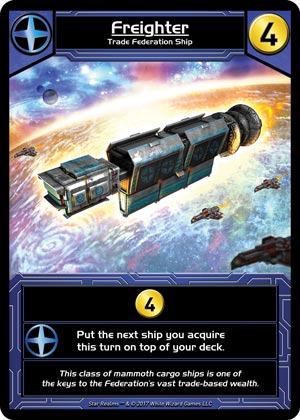
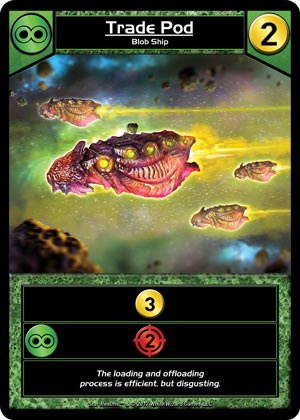
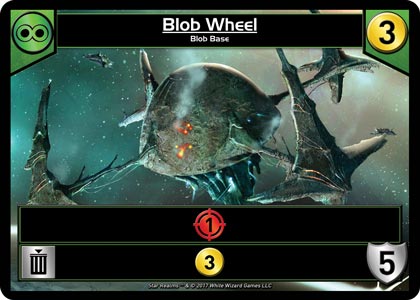
Big-trade cards are nearly essential! (Or: Whoever buys Freighter first, wins.)
With the inclusion of United Heroes, you will have plenty of options to spend your trade in the late game and get great value out of doing so. Even if it is the only Trade Federation card you will buy during the entire game, Freighter is a must-buy if you can get it before your first shuffle. It is probably worth it before your second shuffle, too.
Freighter, being the highest-trade-generating card in the format, is the obvious go-to for collecting those expensive Heroes and the high-end cards from the Crisis packs. But don’t overlook Trade Pod or Blob Wheel. Those two are commons, meaning there are three of each of those in the Trade Deck. You are extremely likely to see one, and most of my wins involved grabbing either of those cards or Freighter.
With the inclusion of Heroes, one needs to be careful about buying cards throughout the entire game. Flipping up a Hero in the mid or late game for your opponent to ride to victory is not a great feeling. While the Heroes are not required for victories, they do tend to help you find them!
Traditional aggro strategies can work, sometimes.
As always, it is important that you “read the board.” Games are more-likely to feature expensive cards than in normal games, but if they aren’t showing up don’t be afraid to go aggro! Especially with two self-scrapping cards in your starting deck, the aggro strategy is available. If you go this route, be certain to buy Battle Pod and/or Spike Pod, and use them to scrap bases from the trade row. If there aren’t any, just scrap the most-expensive card your opponent can purchase next turn.
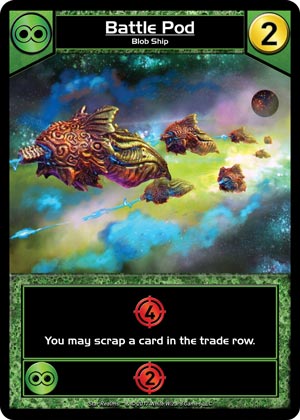
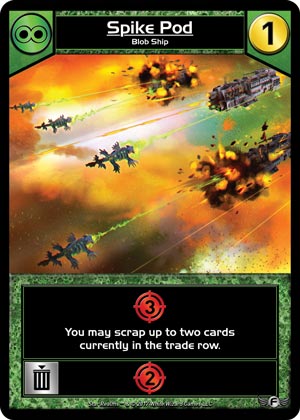
It’s good to go second, so keep that in mind if you are going first!
Because the first player only draws one five-card hand before the first shuffle, they only have one chance to have a massive start. With that in mind, player one may consider spending their first turns buying to protect themselves against the worst-case scenario. If there is an expensive base in the trade row that player two can purchase, player one may want to strongly consider buying combat-generating ships right away. Failure to do so can lead to runaway games, where a base stays in play for several turns in a row.
During the first player’s second turn, they need to be especially careful. They should look at their opponent’s deck to know exactly how much trade they will have, and purchase accordingly. If player two has a bomb second turn coming, and there aren’t any 6+ cost cards in the trade row, it might make sense to skip purchases entirely.
Conclusion
My runs this week were 3-2, 3-2, and 3-0 (in progress). Most of my losses were through misplays around the Heroes. They really are that important! Watch and learn from my mistakes: Run one part 1 and part 2, Run two part 1 and part 2.
This week’s foil looks great! No spoilers here, but if you’d like to see it, take a look at the results article from last week’s Arena. Good luck getting those wins!

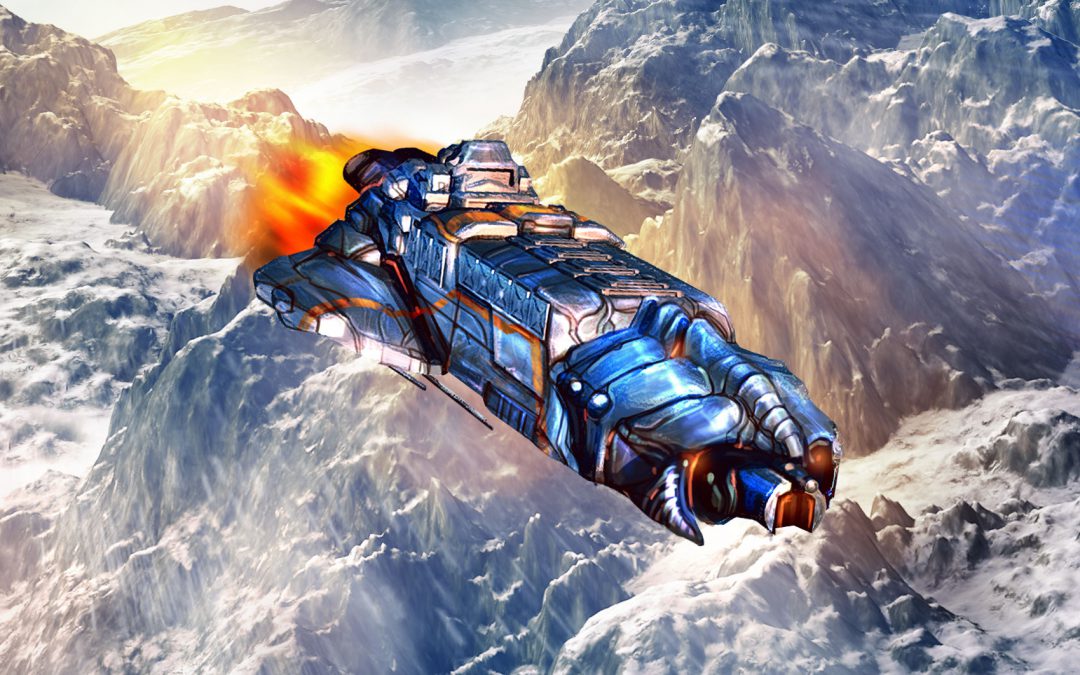
Recent Comments